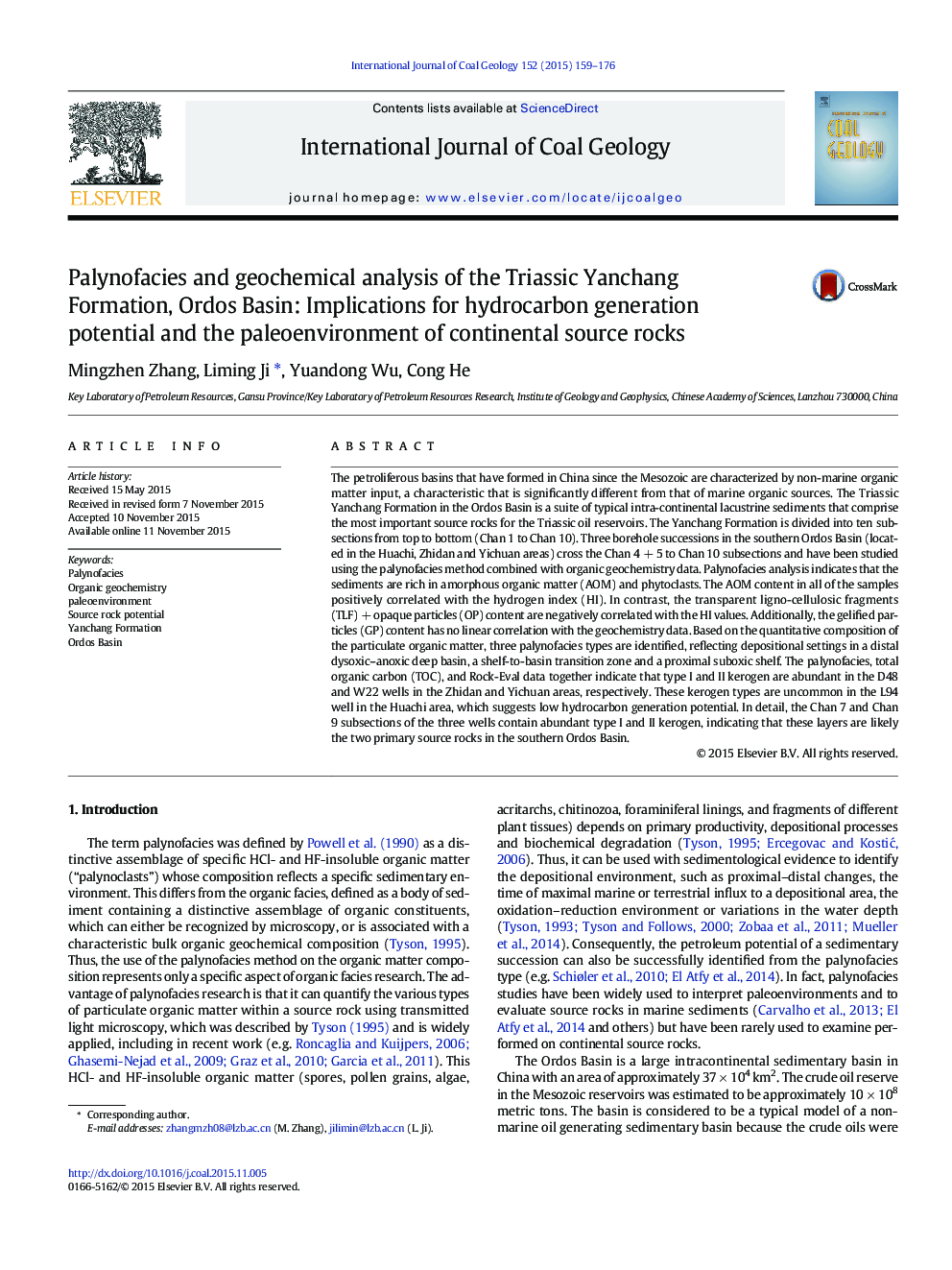| کد مقاله | کد نشریه | سال انتشار | مقاله انگلیسی | نسخه تمام متن |
|---|---|---|---|---|
| 8123941 | 1522549 | 2015 | 18 صفحه PDF | دانلود رایگان |
عنوان انگلیسی مقاله ISI
Palynofacies and geochemical analysis of the Triassic Yanchang Formation, Ordos Basin: Implications for hydrocarbon generation potential and the paleoenvironment of continental source rocks
ترجمه فارسی عنوان
پالینوفیس ها و تجزیه ژئوشیمیایی سازند یانچانگ ترایس، حوضه اورد: تاثیرات برای پتانسیل تولید هیدروکربن و محیط زیست پنهانی سنگ های منبع قاره
دانلود مقاله + سفارش ترجمه
دانلود مقاله ISI انگلیسی
رایگان برای ایرانیان
کلمات کلیدی
موضوعات مرتبط
مهندسی و علوم پایه
علوم زمین و سیارات
زمین شناسی اقتصادی
چکیده انگلیسی
The petroliferous basins that have formed in China since the Mesozoic are characterized by non-marine organic matter input, a characteristic that is significantly different from that of marine organic sources. The Triassic Yanchang Formation in the Ordos Basin is a suite of typical intra-continental lacustrine sediments that comprise the most important source rocks for the Triassic oil reservoirs. The Yanchang Formation is divided into ten subsections from top to bottom (Chan 1 to Chan 10). Three borehole successions in the southern Ordos Basin (located in the Huachi, Zhidan and Yichuan areas) cross the Chan 4Â +Â 5 to Chan 10 subsections and have been studied using the palynofacies method combined with organic geochemistry data. Palynofacies analysis indicates that the sediments are rich in amorphous organic matter (AOM) and phytoclasts. The AOM content in all of the samples positively correlated with the hydrogen index (HI). In contrast, the transparent ligno-cellulosic fragments (TLF)Â +Â opaque particles (OP) content are negatively correlated with the HI values. Additionally, the gelified particles (GP) content has no linear correlation with the geochemistry data. Based on the quantitative composition of the particulate organic matter, three palynofacies types are identified, reflecting depositional settings in a distal dysoxic-anoxic deep basin, a shelf-to-basin transition zone and a proximal suboxic shelf. The palynofacies, total organic carbon (TOC), and Rock-Eval data together indicate that type I and II kerogen are abundant in the D48 and W22 wells in the Zhidan and Yichuan areas, respectively. These kerogen types are uncommon in the L94 well in the Huachi area, which suggests low hydrocarbon generation potential. In detail, the Chan 7 and Chan 9 subsections of the three wells contain abundant type I and II kerogen, indicating that these layers are likely the two primary source rocks in the southern Ordos Basin.
ناشر
Database: Elsevier - ScienceDirect (ساینس دایرکت)
Journal: International Journal of Coal Geology - Volume 152, Part B, 1 December 2015, Pages 159-176
Journal: International Journal of Coal Geology - Volume 152, Part B, 1 December 2015, Pages 159-176
نویسندگان
Mingzhen Zhang, Liming Ji, Yuandong Wu, Cong He,
